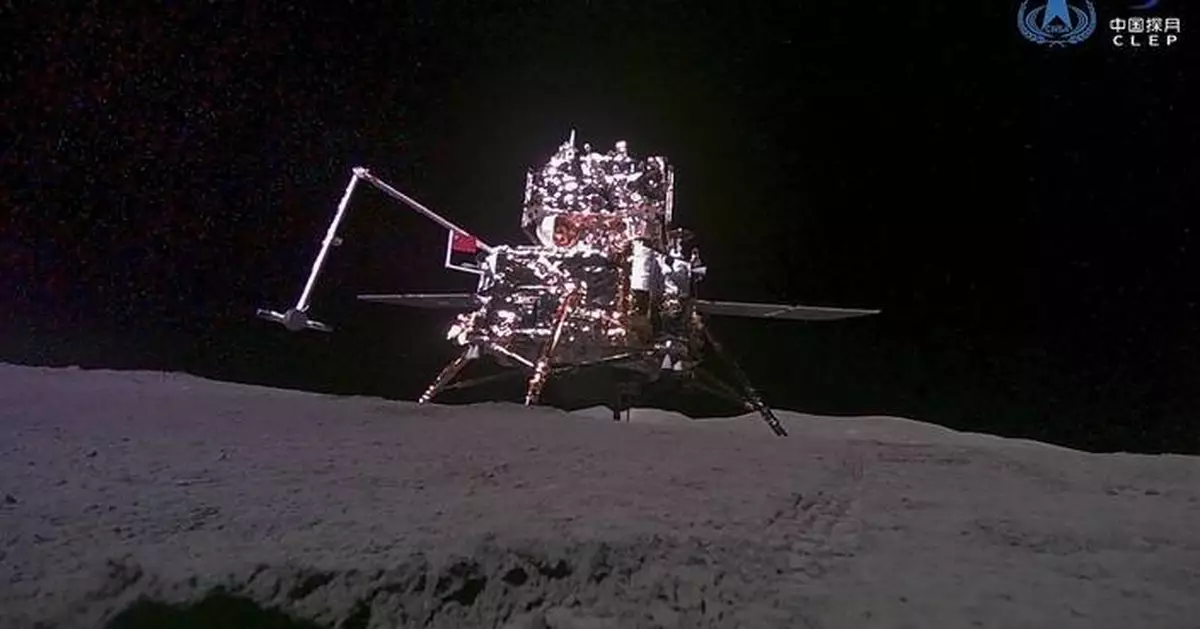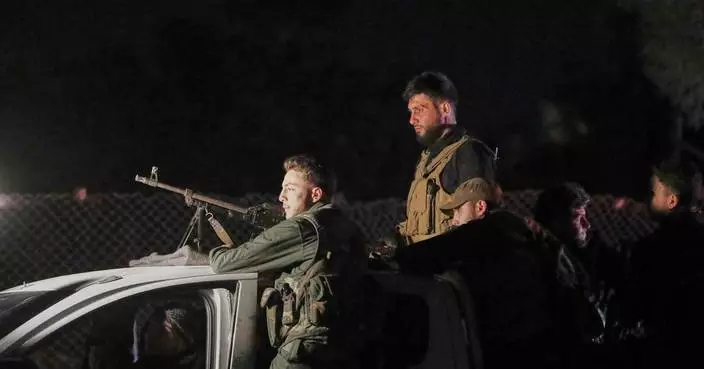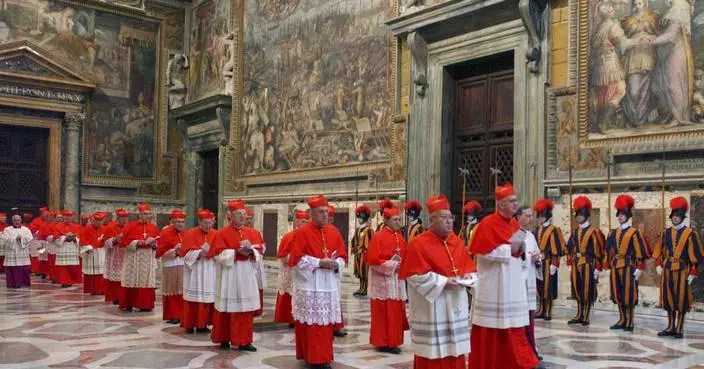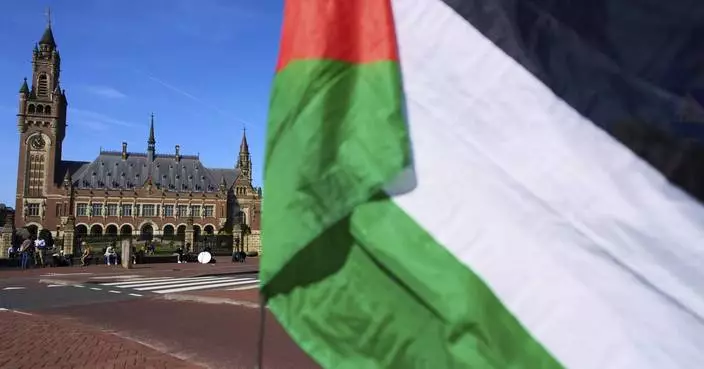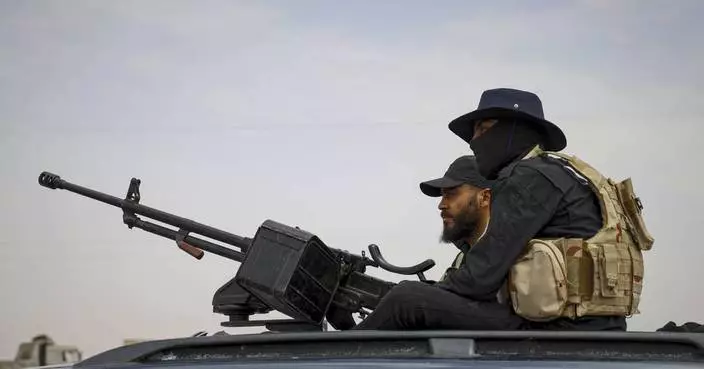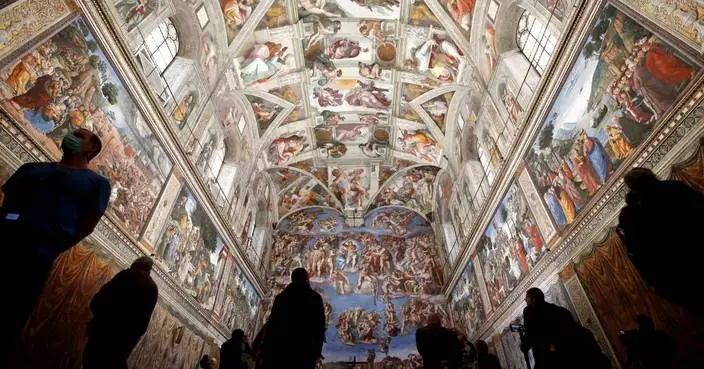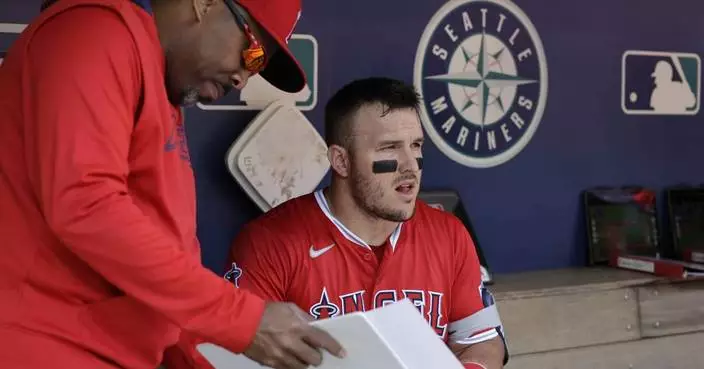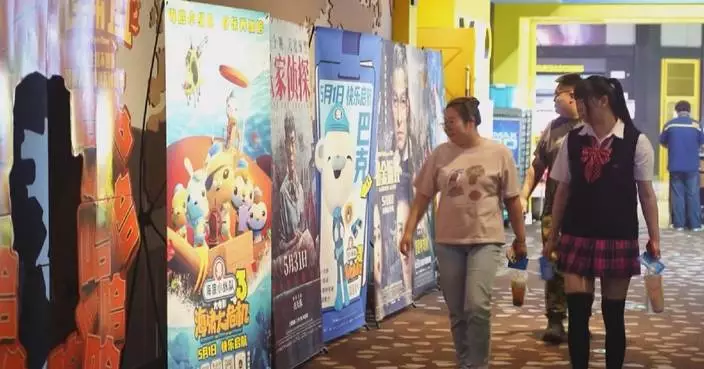CAPE CANAVERAL, Fla. (AP) — Soil and rocks returned from the moon’s mysterious far side suggest it may be drier than the side constantly facing Earth, Chinese scientists reported Wednesday.
But they cautioned more samples are needed for a clearer picture.
A better understanding of the abundance of water in the lunar mantle can help explain how the moon evolved, the researchers noted. But it could also be all the more reason for astronauts to stick close to the near side of the moon as currently planned.
China became the first country to land on the moon’s far side last year. The Chang’e 6 spacecraft scooped up the volcanic rock and dirt from the ancient, sprawling South Pole-Aitken basin, one of the largest impact craters in the solar system.
The Chinese Academy of Sciences’ Sen Hu said he and his team received 5 grams of soil samples, then selected 578 particles for detailed analysis using electron microscopes.
They estimated the water abundance at less than 1.5 micrograms per gram, on the dry end of what’s been found in samples gathered over past decades from the moon’s near side. Measurements on samples from the near side have ranged between 1 microgram and 200 micrograms per gram.
Given the limited sampling, it’s uncertain how widespread this dry condition might be, the scientists noted in their study published in the journal Nature.
“More far side samples are required for testing and further unraveling" how much water there is, Hu said in an email.
It’s possible the impact that created this basin may have blasted water elements to the near side, leaving the far side depleted. Another possibility is that the vertical distribution of water could be different between the two hemispheres.
Even if confirmed, the findings shouldn’t drastically alter NASA’s plans to send astronauts to the moon’s south polar region, where permanently shadowed craters are believed to hold massive amounts of ice. This frozen water could be used for drinking, cooking and making rocket fuel.
NASA aims to send four astronauts around the moon next year under its Artemis program, the successor to Apollo, which put 12 men on the moon from 1969 through 1972. That would be followed by a landing near the lunar south pole by astronauts no earlier than 2027. China is seeking its own astronaut moon landing by 2030.
The Associated Press Health and Science Department receives support from the Howard Hughes Medical Institute’s Science and Educational Media Group and the Robert Wood Johnson Foundation. The AP is solely responsible for all content.
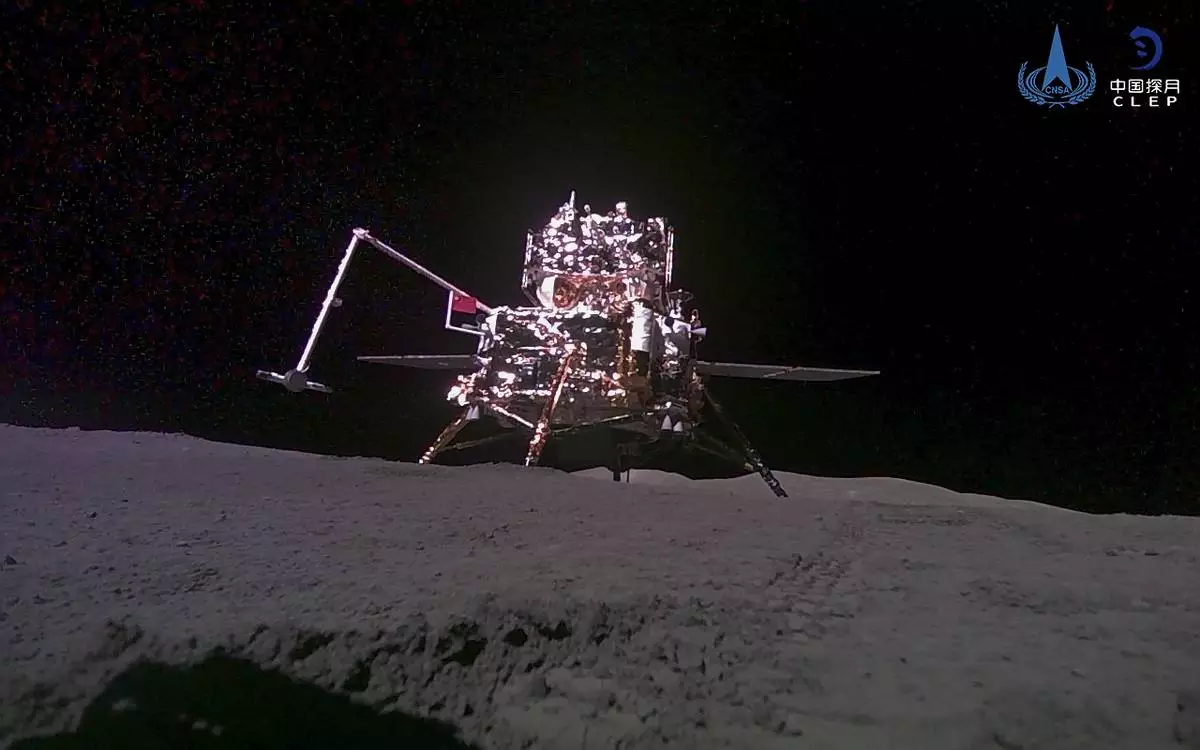
FILE - This China National Space Administration (CNSA) handout image released by Xinhua News Agency, shows the lander-ascender combination of Chang'e-6 probe taken by a mini rover after it landed on the moon surface, June 4, 2024. (CNSA/Xinhua via AP, File)
WASHINGTON (AP) — Secretary of State Marco Rubio has been thrown into two top national security jobs at once as President Donald Trump presses forward with his top-to-bottom revamp of U.S. foreign policy, upending not only longstanding policies that the former Florida senator once supported but also the configuration of the executive branch.
Trump's appointment of Rubio to temporarily replace Mike Waltz as national security adviser is the first major leadership shake-up of the nascent administration, but Waltz's removal had been rumored for weeks — ever since he created a Signal group chat and accidentally added a journalist to the conversation where top national security officials shared sensitive military plans.
So, just over 100 days into his tenure as America’s top diplomat, Rubio now becomes just the second person to hold both positions. He follows only the late Henry Kissinger, who served as both secretary of state and national security adviser for two years under Presidents Richard Nixon and Gerald Ford in the 1970s.
Rubio — a one-time Trump rival and hawkish conservative who was derided by the president as “Little Marco” during the 2016 presidential campaign — has proven adept at aligning himself with Trump’s “America First” foreign policy positions. Rubio has largely eschewed his staunch advocacy of providing foreign aid and promoting democracy overseas since taking over the State Department, repeating a refrain that every policy or program should make America safer, stronger or more prosperous.
Since being confirmed in a 99-0 Senate floor vote, Rubio has presided over a radical reorganization of the State Department. That includes the dismantling of the U.S. Agency for International Development and plans to cut U.S. jobs by 15% while closing or consolidating more than 100 bureaus worldwide. He has also begun a major cull of the visa system, revoking hundreds, if not thousands, of visas issued to foreign students.
He has overseen the negotiation of agreements to send immigrants accused of crimes to third countries, most notably to El Salvador, in cases that are now being challenged in federal courts.
“Marco Rubio, unbelievable," Trump said Thursday before announcing on social media that Waltz would be nominated as ambassador to the United Nations and Rubio would take over as national security adviser in the interim. "When I have a problem, I call up Marco, he gets it solved.”
That's a far cry from 2016, when Rubio and Trump were competing for the GOP presidential nomination and Rubio warned that Trump was a threat. After Trump won, the relationship remained contentious, but eight years later, Rubio was an enthusiastic Trump supporter who worked his Florida bona fides to get into the president's inner circle.
Yet, even after Rubio was nominated to the top diplomatic job, doubts remained. Many pundits suggested he would last only a short time in office before Trump dismissed him in the same way he did his first-term secretary of state, Rex Tillerson, who was fired by tweet in 2018 just 18 months into the job.
Yet Rubio has been resilient. And as of Thursday, he oversees both the State Department and the National Security Council, which is responsible for coordinating all executive branch foreign policy functions, ranging from diplomatic to military and intelligence operations.
Thomas Wright, an NSC official during the Biden administration who is now a senior fellow at the Brookings Institution, said the national security adviser post alone is “more than a full-time job.”
“It is just very hard to comprehend the idea that you can do this job sort of part time,” Wright said.
He said he watched national security adviser Jake Sullivan and his deputy work 14-15 hour days, six to seven days a week: “I think they felt that they had to do that to do the job properly.”
Appearing Thursday night on Fox News Channel’s “Hannity," Rubio was not asked to weigh in on the president’s decision to tap him as national security adviser but did joke that he was barred from adding pope to his list of many jobs because he is married.
But as he marked the first 100 days of Trump's latest term, Rubio applauded the president for his vision.
“I am honored by the trust President Trump placed in me and I am proud of the work the Department of State has done over the past hundred days to implement his agenda and put the American people first,” he wrote Wednesday in a State Department Substack post.
One of Rubio’s former Florida statehouse colleagues, Dan Gelber, a Democrat, said of Rubio's increasing responsibilities that "Marco is probably, to a certain extent, one of the more reliable Cabinet officers, if not the most reliable."
“And I can only believe those qualities are even more vital to his current confluence of positions and growing portfolio,” Gelber said. "He’s not a chaos guy, and I’ve always sort of wondered how he’s going to do in an administration where there seems to be so much chaos. And maybe that’s why he’s getting all these positions.”
Rubio's dual-hatted role comes on top of him serving as acting administrator of the largely shut down USAID and as acting head of the National Archives. It puts him in a similar position to that of Trump's longtime personal friend and golfing buddy Steve Witkoff.
As a special envoy, Witkoff is the lead U.S. negotiator in the Iran nuclear talks and in administration peace efforts for the Israel-Hamas war and the Ukraine-Russia war.
In many ways, Rubio and Witkoff are following in the footsteps of Trump’s son-in-law Jared Kushner, who had multiple roles in the first administration, ranging from the Middle East to Latin America and immigration.
State Department officials appeared taken aback by Trump's appointment of Rubio as acting national security adviser. Spokeswoman Tammy Bruce said at a briefing Thursday that she learned the news from a journalist who asked her a question about Trump's post minutes after it appeared on social media.
Officials, however, have noted that Rubio in recent weeks has spent an increasingly large amount of time at the White House away from his posh seventh-floor State Department office in what is known as “Mahogany Row,” a corridor known for its wood paneling.
At the same time, these officials, who spoke on condition of anonymity to discuss the personnel shift, said they did not expect Rubio's duties as secretary of state to change significantly. He still plans to travel on diplomatic missions abroad and likely will delegate at least some of the NSC management to others, they said.
Amiri reported from the United Nations.
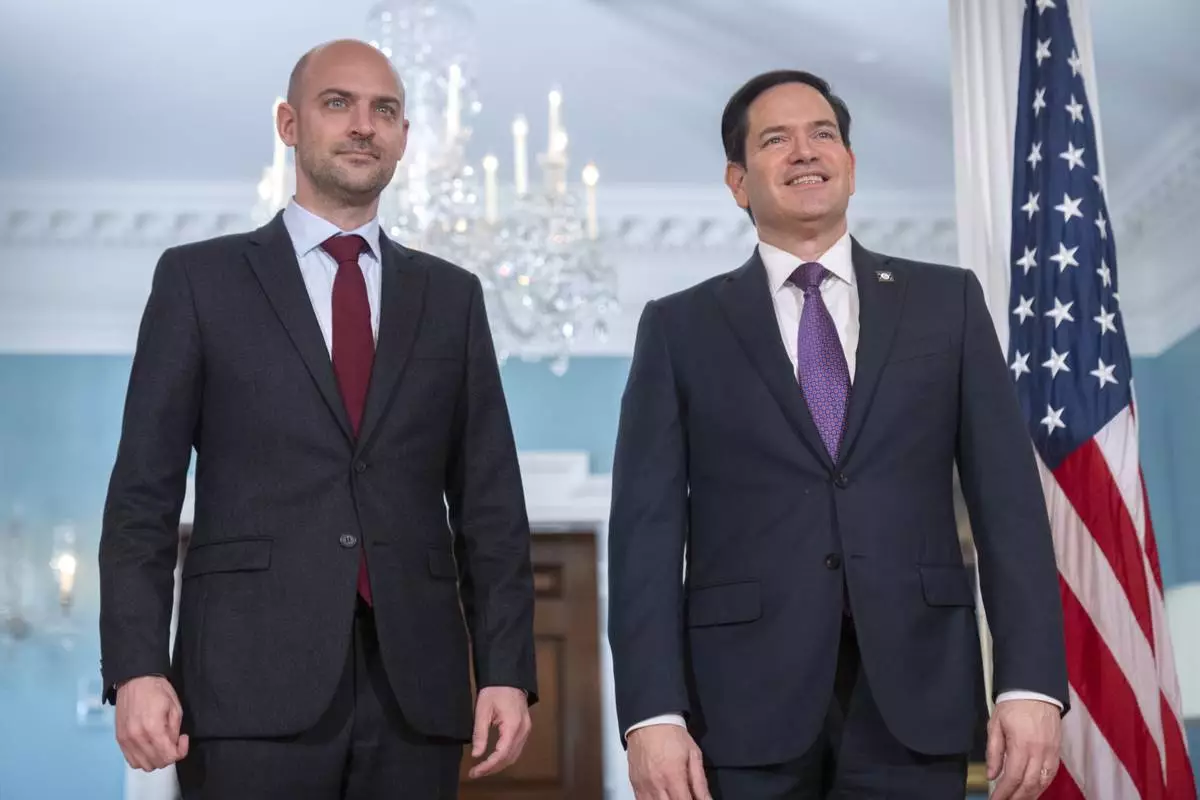
Secretary of State Marco Rubio, right, stands with French Foreign Minister Jean-Noel Barrot at the State Department, Thursday, May 1, 2025, in Washington. (AP Photo/Mark Schiefelbein)
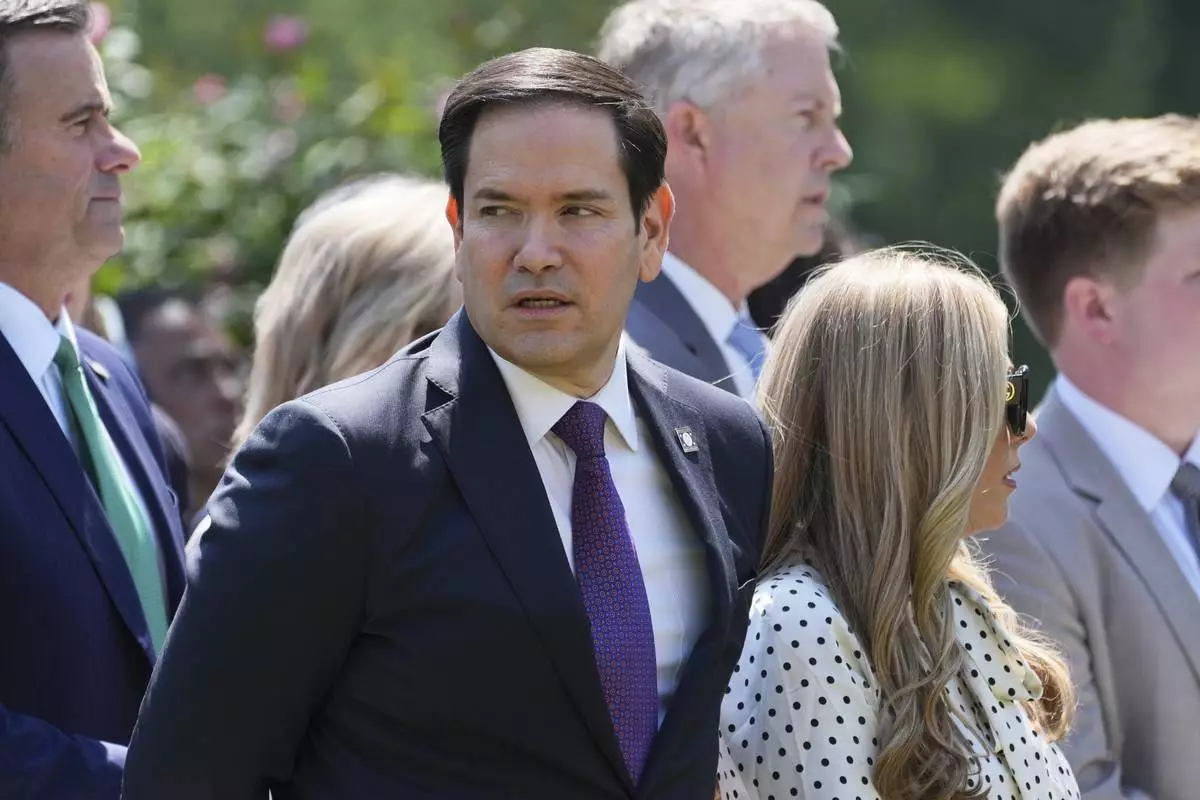
Secretary of State Marco Rubio attends a National Day of Prayer event in the Rose Garden of the White House, Thursday, May 1, 2025, in Washington. (AP Photo/Evan Vucci)
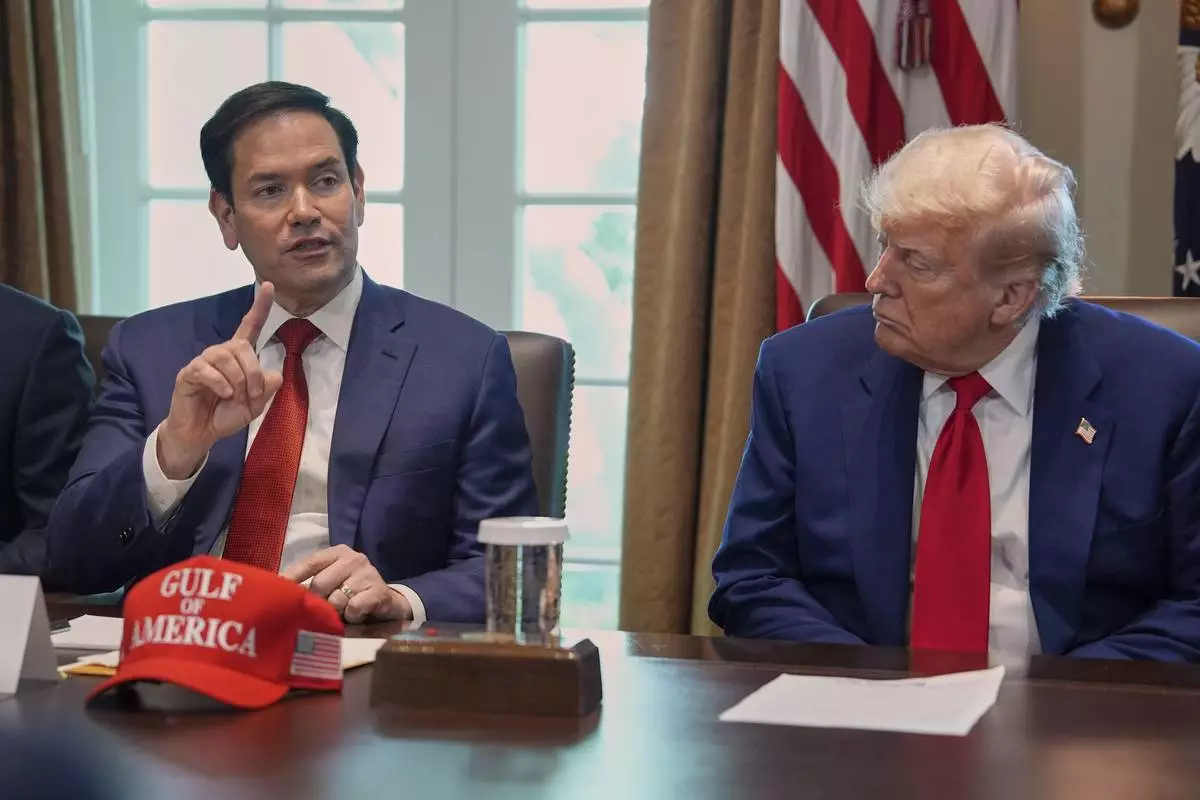
Secretary of State Marco Rubio speaks during a cabinet meeting at the White House, Wednesday, April 30, 2025, in Washington, as President Donald Trump look on. (AP Photo/Evan Vucci)



